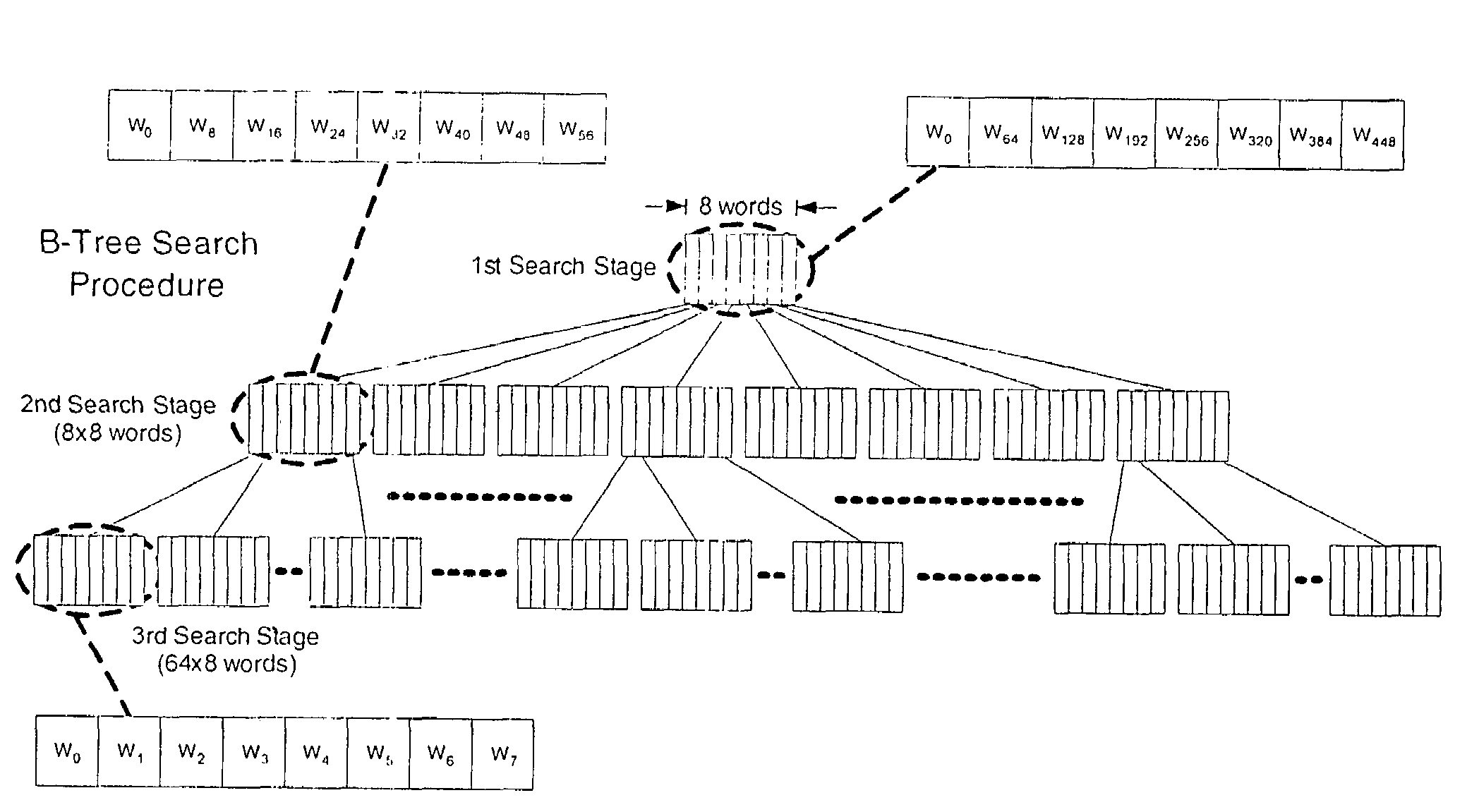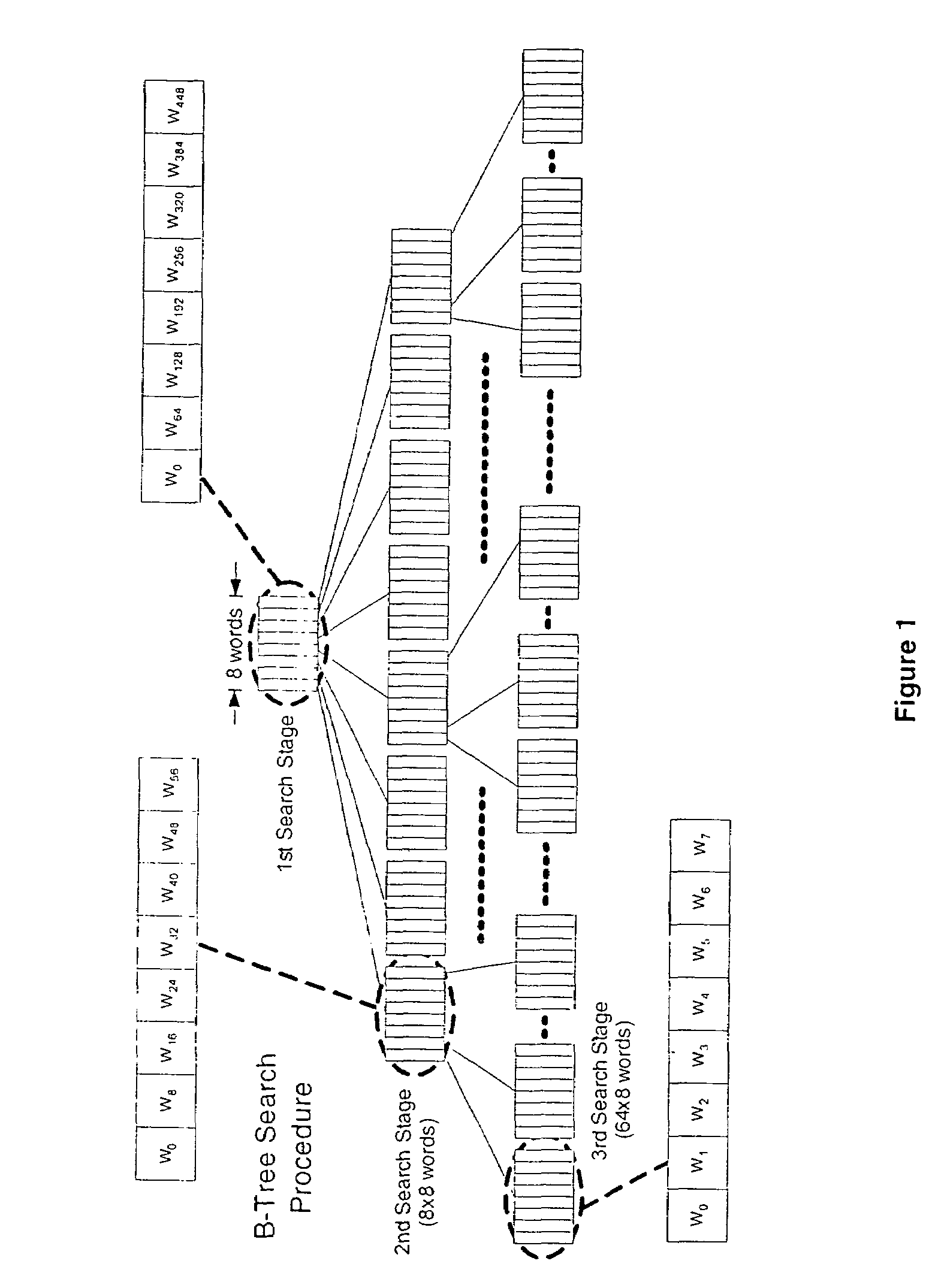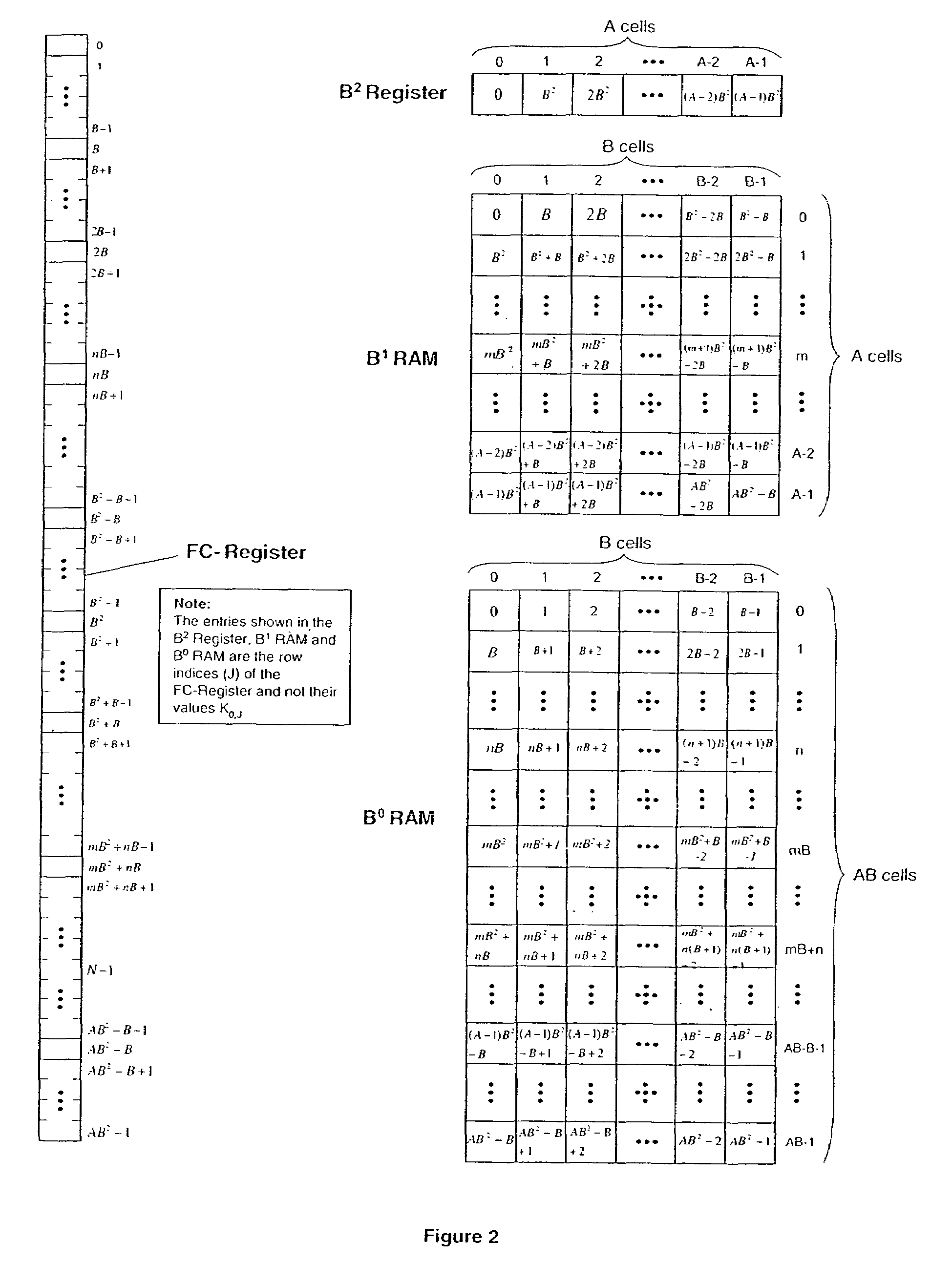Search method using coded keys
a search method and key technology, applied in the field of search methods using coded keys, can solve the problems of requiring an excessive amount of time (clock cycles), storage space limitation, and affecting all state-of-the-art,
- Summary
- Abstract
- Description
- Claims
- Application Information
AI Technical Summary
Benefits of technology
Problems solved by technology
Method used
Image
Examples
case 2
ed Key Larger than the Matched Key Entry
[0099]This algorithm consists of three main steps (refer to the example provided in Table 5):[0100]1. Sequential comparison of the Searched Key with the PRKs. The last matching result is a PEMK.[0101]2. Identification of the MSMb in the Searched Key corresponding to the last matching PRK. In this example, the last matching PRK is 1UUUUU, and MSMb=3, because this is the MSB which is 1 in the Searched Key and 0 in the long Key Entry.[0102]3. Sequential comparison of the Coded Keys (starting from one after the PEMK in ascending order) with the MSMb, identification of the first Coded Key that is larger than the MSMb index (4 in this example), denoted as GTMSMb, selection of the previous long Key Entry (100101) as the Range Match Key (RMK), and retrieval of the AD corresponding to the matching Key Index. If such a Coded Key is not found, the Searched Key is larger than all the Key Entries in the list, and the last Key Entry is the RMK.
[0103]
TABLE 5...
case 3
ed Key Smaller than the Matched Key Entry
[0108]This algorithm consists of three main steps (refer to the example provided in Table 6):[0109]1. Sequential comparison of the Searched Key with the PRKs. The last matching result is a PEMK.[0110]2. Identification of the MSMb in the Searched Key corresponding to the last matching PRK. In this example, the last matching PRK is 11U1U1, and MSMb=3, because this is the MSB which is 0 in the Searched Key and 1 in the long Key Entry.[0111]3. Sequential comparison of the Coded Keys (starting from the PEMK in descending order) with the MSMb, identification of the first Coded Key that is larger than the MSMb index (4 in this example), denoted as GTMSMb, selection of the previous long Key Entry (100110) as the Range Match Key (RMK), and retrieval of the AD corresponding to the matching Key Index. If such Coded Key is not found, then the Searched Key is smaller than all the Key Entries in the list, the Searched Key is considered to be out of range, ...
case 4
Bit Not Found
[0269]If a valid bit is not found, then it means that for all bi, 0≦i≦M−1, bi is not valid.
[0270]If SK0, then according to the problem definition, matching index=−1.
[0271]If SK>K0, then the algorithm sets i_valid=0, and performs the same procedure as in the case of SK>Ki—valid (case 2). If i_valid=0, then the two following statements are true:[0272]1. SK>K0, i.e., SK>Ki—valid.[0273]2. All the bi values where i≧0, i.e., i≧i_valid, are not valid.
[0274]The proof for the case SK>Ki—valid uses the initial problem definition data, and the above statements (1) and (2). In other words, all the facts assumed in case 2 are true for this case also when i_valid=0. Therefore, the algorithm for case 2 is also applicable to this case.
[0275]The case of SK=K0 is impossible, because, according to Theorem 4, if SK=K0, then b0 is valid. But, b0 in this case is not valid.
[0276]As used herein in the specification and in the claims section that follows, the term “monotonic order” and the like...
PUM
 Login to View More
Login to View More Abstract
Description
Claims
Application Information
 Login to View More
Login to View More - R&D
- Intellectual Property
- Life Sciences
- Materials
- Tech Scout
- Unparalleled Data Quality
- Higher Quality Content
- 60% Fewer Hallucinations
Browse by: Latest US Patents, China's latest patents, Technical Efficacy Thesaurus, Application Domain, Technology Topic, Popular Technical Reports.
© 2025 PatSnap. All rights reserved.Legal|Privacy policy|Modern Slavery Act Transparency Statement|Sitemap|About US| Contact US: help@patsnap.com



